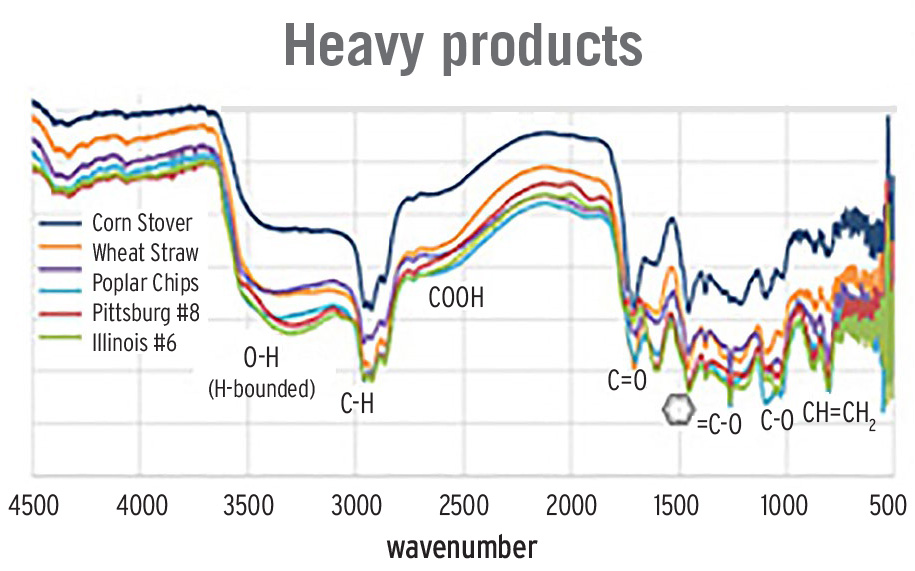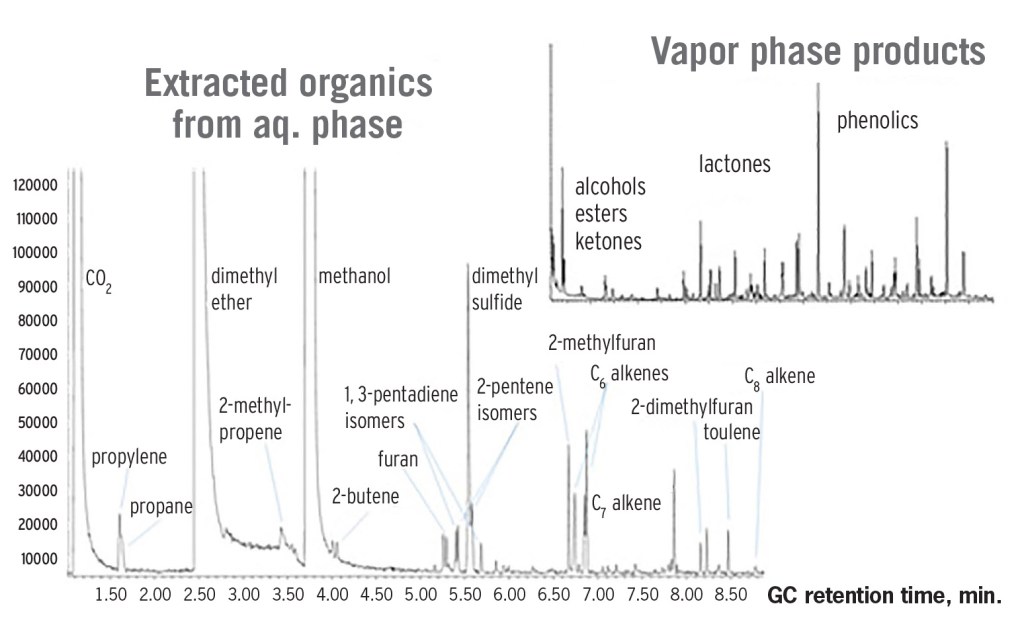Tech Briefs
Savannah River National Laboratory
Conversion of Biomass by Efficient Base-Catalyzed Decarboxylation Reaction
Technology Overview
Savannah River National Laboratory (SRNL) has discovered a highly efficient and universal biomass conversion method utilizing a base-catalyzed decarboxylation reaction. This method can efficiently convert all components of the biomass feedstock to liquid syncrude and carbon dioxide byproduct.

Benefits
- 100% conversion of any type of biomass feedstock
- No expensive or complicated pretreatment
- Moderate temperature of operation
Applications
- Production of hydrocarbons from biomass feedstock
- Mixed biomass feedstocks
- Wet biomass
- Coal liquefaction
Description
Biomass has the potential to be a major source of renewable energy, but existing biomass conversion processes have proven limited in applicability. This invention comprises an efficient method to convert biomass by combining with a strong base and solvent to encourage the decarboxylation reaction. This reaction can occur at moderate temperatures (200-300°C) and achieves nearly 100% conversion for almost any type of biomass feedstock. The process can be applied to mixtures of different biomaterials in a single process. For instance, mixtures of coal with wood scraps can be converted in the same reaction vessel. The reaction mixture includes biomass feedstock, a base component, and a solvent in a stoichiometric amount that allows caustic pH to be retained in the mixture after consumption for carbon dioxide formation. The conversion reaction is primarily decarboxylation, hydrolysis and alcoholysis.

Intellectual Property
This technology and methods for its use have been granted U.S. Patent No. 10,392,565 B2 (August 27, 2019), “Conversion of Biomass by Efficient Base-Catalyzed Decarboxylation Reaction” and is available for licensing.
Partnering Opportunities
SRNL invites interested companies with proven capabilities in this area of expertise to develop commercial applications for this process under a cooperative research and development agreement (CRADA) or licensing agreement. Interested companies will be requested to submit a business plan setting forth company qualifications, strategies, activities, and milestones for commercializing this invention. Qualifications should include past experience at bringing similar products to market, reasonable schedule for product launch, sufficient manufacturing capacity, established distribution networks, and evidence of sufficient financial resources for product development and launch.
Download Tech Brief
Contact Information
Savannah River National Laboratory
E-mail: partnerships@srnl.doe.gov